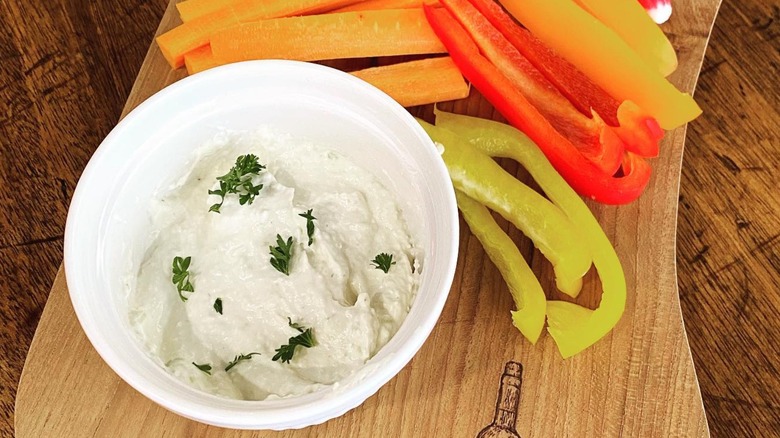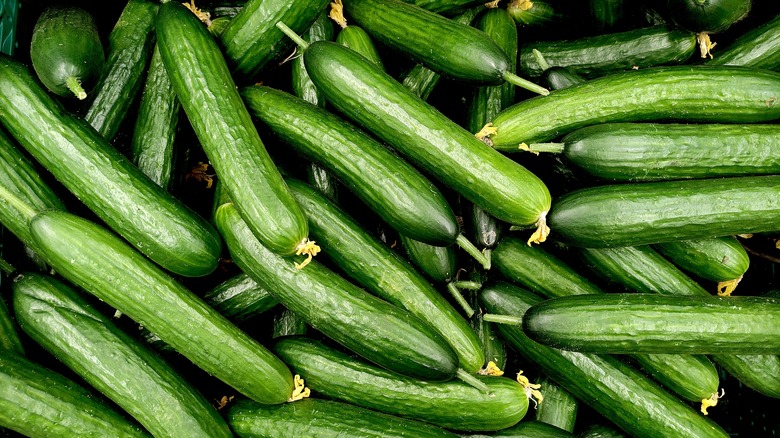What Makes Kentucky Benedictine Dip Unique?
Whether your go-to dip for a crowd-pleasing veggie platter or hors d'oeuvre spread is creamy ranch, savory French onion, or another homemade dressing concoction, you might want to think about switching up your typical appetizer menu and look to none other than Kentucky for the ultimate summertime dip.
This Southern state's staples you're familiar with may start and end with its famed Kentucky bourbon, fried chicken, and its own version of barbecue. However, Kentucky has many more lesser-known culinary must-tries to offer up, from derby pie to hot brown sandwiches to Kentucky Benedictine dip.
This creamy and refreshing dip is perfect to pair with your favorite assortment of seasonal veggies or is great for spreading over finger foods, like tea sandwiches and crispy crackers. Made with rich dairy products and full of cooling cucumber pieces, this dip is ideal for bringing along with you to all your summertime obligations. Not to mention enjoying it on Kentucky's biggest event day, the Kentucky Derby.
History of Kentucky Benedictine dip
While this dip can be seen on kitchen table across Kentucky during the famous derby, it surprisingly wasn't invented with race day in mind. This dish dates back to the early 1900s when Louisville-based restaurateur, Jennie Carter Benedict, invented the dish to be sold at her restaurant. Benedict is still a prominent figurehead in Louisville for her contributions to the local newspaper, The Courier-Journal, and her community work. Today, Kentucky Benedictine dip is most commonly used as a sauce to dunk your favorite crudité. But, its first use was actually being spread over bread to create fresh cucumber sandwiches.
The original recipe actually looked slightly different from the modern renditions you will find on people's tables. The first versions didn't include chunks of cucumber and onion, rather it only used the juice from the two vegetables. And, it was most likely absent of today's most iconic ingredient in the dip: mayonnaise.
Ingredients in Kentucky Benedictine dip
The base of this dip is usually mayonnaise, cream cheese, and sour cream blended smoothly together. Many Southerners prefer using Duke's mayonnaise, but any brand you're loyal to will do. Minced pieces of cucumber and sometimes yellow onion are also mixed into this spread, giving it a refreshing and tangy flavor. Salt, black pepper, cayenne, and dill are the most common seasonings sprinkled in.
An added pinch of spices, some sprigs of dill, green onions, or parsley are common garnishes that add an extra bit of flair to the final presentation. You may also notice that many food blogs or magazines featuring this recipe display an aesthetic green-colored dip. However, don't worry if your own rendition doesn't have that beautiful mint green hue — it's only thanks to the optional addition of a drop or two of food coloring that the iconic green color shines through.
How Kentucky Benedictine dip is made and eaten
This dressing is quick and easy to make yourself, whether you're in need of a simple appetizer or a new condiment for your sandwiches. The first step is to peel and slice open your cucumber. Ideally, you'll want to spoon out the middle section filled with seeds before dicing it into small pieces and pat dry. Some recipes also opt to grate their cucumber to create a smoother-textured dip. It's up to your personal preferences whether you want your spread to take on a chunky or smooth consistency.
Separately, all the other ingredients get thoroughly blended together, either with a mixer or vigorously by hand. Once combined, the cucumber pieces can be tossed in as well, along with any optional garnishes or food coloring. At this point, your dip is ready to be poured into a serving bowl or paired with a charcuterie board that is topped with fresh vegetables, various meats, and cheeses.
As you now know, this Kentucky-made dip makes an appearance each year on Kentucky Derby day. Across the state, race watchers enthusiastically enjoy this staple dip on their celebratory veggie platters. So, whether you're throwing your first barbecue get-together of the season or need a standout potluck dish in a pinch, try whipping up this festive dip for your next event.



